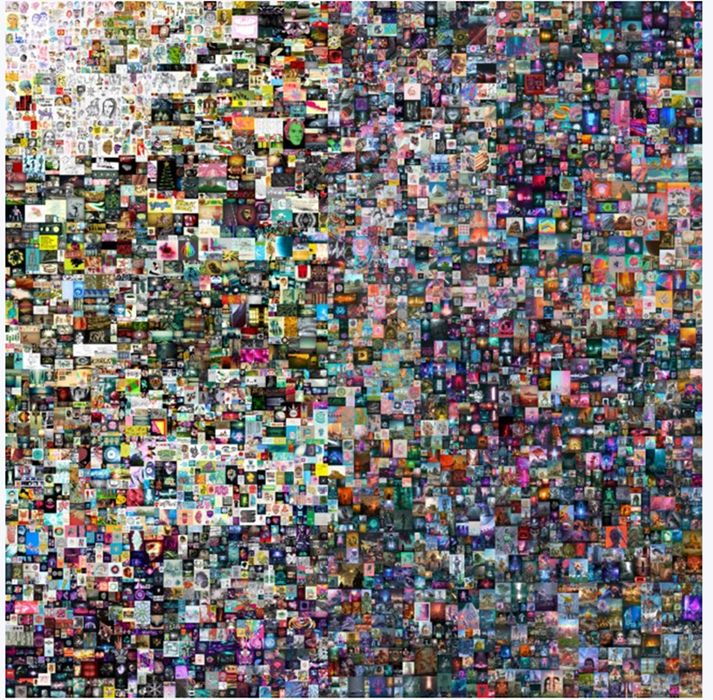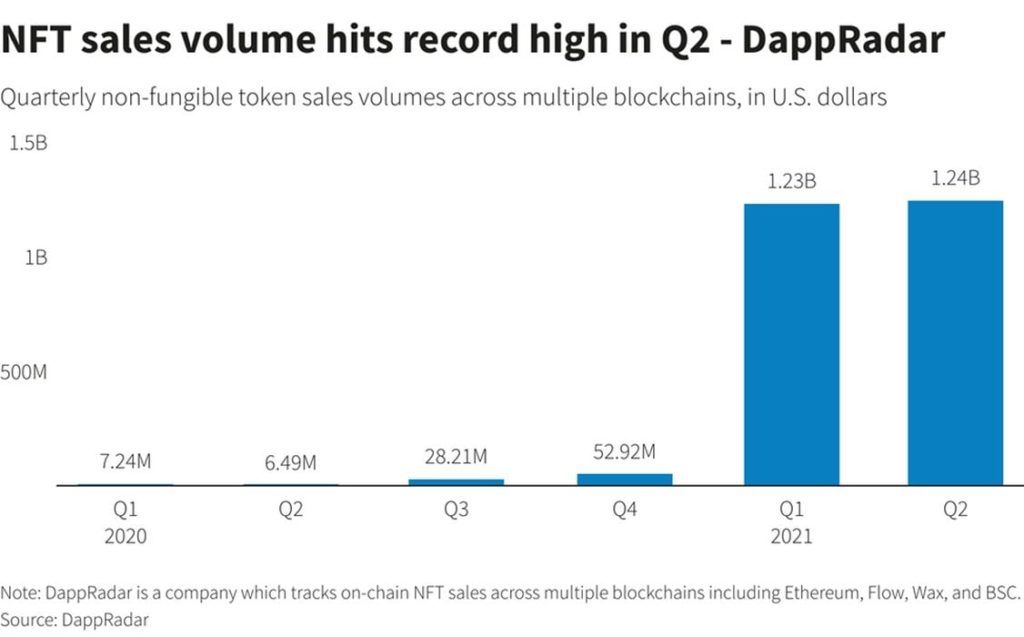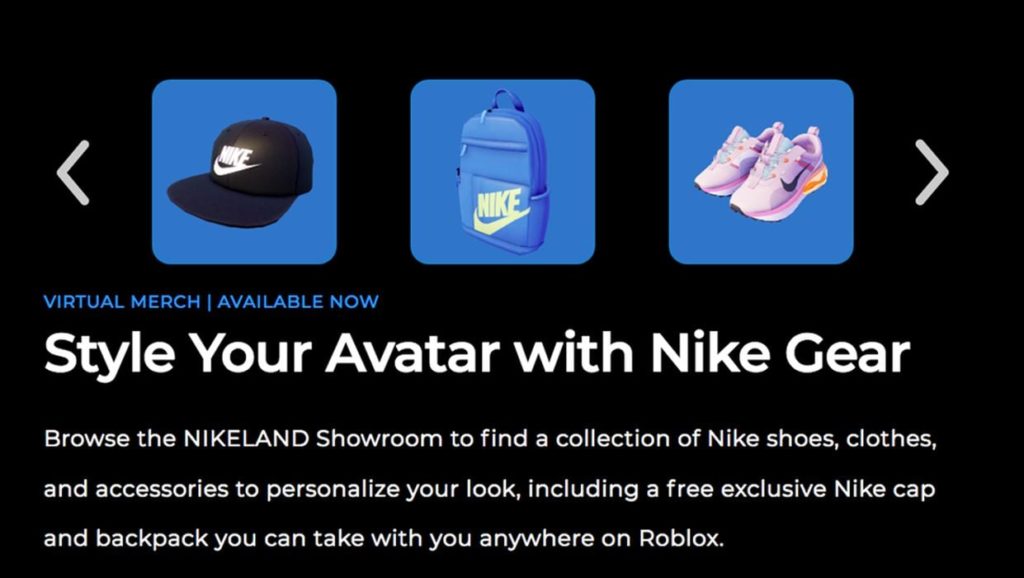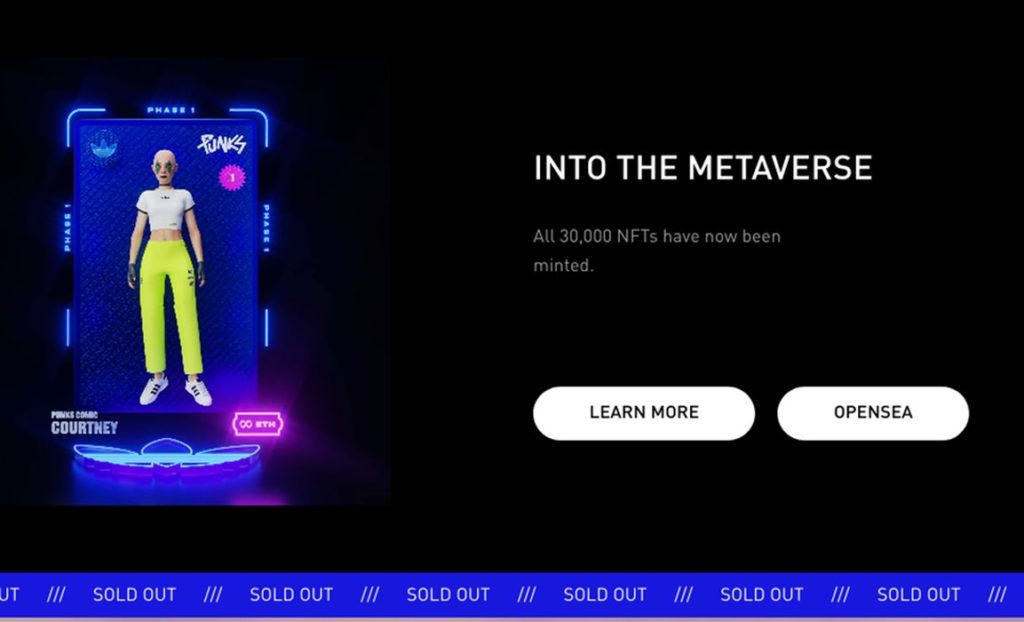Charles Goulding & Andressa Bonafe examine how NFTs could make considerable use of 3D printing.

Non-fungible tokens (NFTs) are cryptographic assets that exist on a blockchain and carry unique identification codes and metadata. Due to their guaranteed uniqueness, NFTs work as identifiers that can be linked to any given item, either physical or digital, attesting to both authenticity and ownership.
NFTs are inherently different from fungible tokens, such as cryptocurrencies, which are identical and therefore interchangeable. Their function lies in representing, or “tokenizing”, a variety of assets and, in doing so, facilitating trade and reducing the risk of fraud.
NFTs’ potential to open up new markets and investment opportunities is indisputable. In the first semester of 2021 alone, NFT sales hit US$2.5B, attracting a fast-growing number of artists, companies, and even government institutions.

In March 2021, auction house Christie’s sold a monumental digital collage by Mike Winkelmann, also known as Beeple, for US$69M. Bringing together 13-and-a-half years of daily digital pictures, EVERYDAYS: THE FIRST 5000 DAYS became a milestone in a new era of art collecting.
It was the first major sale of purely digital artwork with a unique NFT that allows for the verification of its rightful owner and authenticity. Digital marketplace MakersPlace has issued the NFT, which is encrypted with the artist’s unforgeable signature and can be uniquely identified on the blockchain.
Besides artwork, other prominent examples of NFT applications include private equity and real estate transactions, with benefits that include the streamlining of processes, removal of intermediaries, and ease of fractionalization. NFT tokenization has been applied to a multitude of assets, including in-game items, event tickets, domain names, and even the first tweet ever. Identity management, such as the potential creation of NFT-enabled passports, is a promising field.
Hybrid NFT/Physical Goods
While initially used to digitally represent physical goods or to verify the authenticity of purely digital assets, NFTs are now opening the way for hybrid experiences. This innovative approach to design and development starts in the metaverse, where consumers explore and compare various iterations of a product in different virtual environments. Once settled on their preferences, users can not only acquire the digital version of a good but also its physical one.
3D printing is the perfect medium to bridge this gap between the digital and physical worlds. Enabling faster and more efficient production of customized items, additive manufacturing is already integral to some NFT early adopters. This is the case of Nike, whose diverse application of 3D printing dates back to 2013 and encompasses a variety of groundbreaking designs, from soccer cleats to track spikes, including the record-breaking Zoom Vaporfly.
Continuing on its path of innovation, Nike is venturing into the world of NFTs. In October 2021, the company filed trademark applications for “virtual goods” for both download and use in virtual environments. Shortly afterwards, it launched “Nikeland”, a virtual space within the online game platform Roblox where users can interact through sports and style their avatars with Nike gear.

More recently, Nike acquired RTFKT, a maker of virtual sneakers and other collectibles. Founded in 2020 and valued at $33.3 million last May, the startup “leverages the latest in game engines, NFTs, blockchain authentication and augmented reality to create one of a kind virtual products and experiences”. Though native to the metaverse, RTFKT has advanced a hybrid model through “forging events” in which owners of NFTs can request to have their virtual goods made into real ones.
Other athletic apparel and clothing companies are also stepping into the metaverse. Adidas recently launched its first NFT collection, “Into the Metaverse”, in partnership with the Bored Ape Yacht Club (BAYC), the cryptocurrency investor Gmoney, and the comic series Punks Comics. The 30 thousand tokes sold out in 24 hours, for an estimated $23 million.

Similarly, Dolce & Gabbana set record for fashion NFTs, with US$5.7M in nine NFT auctions in September 2021. Gucci, a brand that is advancing automated production also auctioned its first NFT earlier in June for US$25K. It is to be expected that global fast fashion retailers such as Zara could join this trend.
As examples of NFT initiatives multiply, the use of 3D printing to create hybrid experiences should also grow. Additive manufacturing is often an indicator of eligibility for R&D Tax Credits, as presented below.
The Research & Development Tax Credit
The now permanent Research and Development (R&D) Tax Credit is available for companies developing new or improved products, processes and/or software.
3D printing can help boost a company’s R&D Tax Credits. Wages for technical employees creating, testing, and revising 3D printed prototypes can be included as a percentage of eligible time spent for the R&D Tax Credit. Similarly, when used as a method of improving a process, time spent integrating 3D printing hardware and software counts as an eligible activity. Lastly, when used for modeling and preproduction, the costs of filaments consumed during the development process may also be recovered.
Whether it is used for creating and testing prototypes or for final production, 3D printing is a great indicator that R&D Credit eligible activities are taking place. Companies implementing this technology at any point should consider taking advantage of R&D Tax Credits.
Conclusion
NFTs are rapidly creating new market opportunities, from artwork and real estate transactions to a variety of virtual experiences. As the number of companies entering the metaverse grows, 3D printing applications are likely to diversify and gain even more momentum. Additive manufacturing is a premier means to create hybrid NFT/physical experiences and also a great indicator of eligibility for R&D tax credits.
